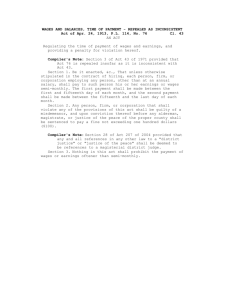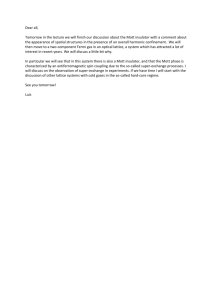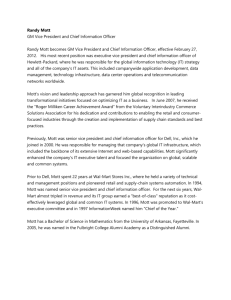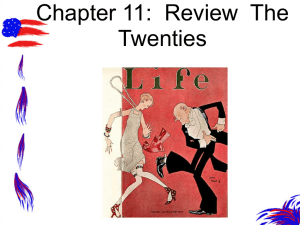Rock-Bottom Prices! How our new lowball culture is hurting the
advertisement
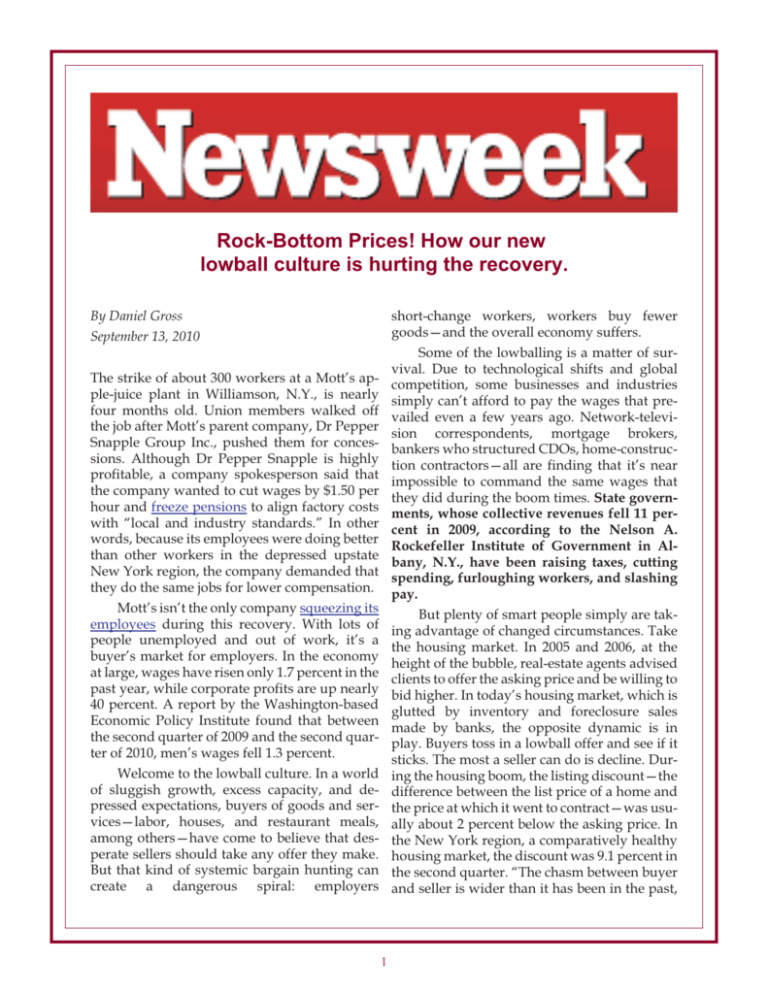
Rock-Bottom Prices! How our new lowball culture is hurting the recovery. By Daniel Gross short-change workers, workers buy fewer goods—and the overall economy suffers. Some of the lowballing is a matter of survival. Due to technological shifts and global competition, some businesses and industries simply can’t afford to pay the wages that prevailed even a few years ago. Network-television correspondents, mortgage brokers, bankers who structured CDOs, home-construction contractors—all are finding that it’s near impossible to command the same wages that they did during the boom times. State governments, whose collective revenues fell 11 percent in 2009, according to the Nelson A. Rockefeller Institute of Government in Albany, N.Y., have been raising taxes, cutting spending, furloughing workers, and slashing pay. September 13, 2010 The strike of about 300 workers at a Mott’s apple-juice plant in Williamson, N.Y., is nearly four months old. Union members walked off the job after Mott’s parent company, Dr Pepper Snapple Group Inc., pushed them for concessions. Although Dr Pepper Snapple is highly profitable, a company spokesperson said that the company wanted to cut wages by $1.50 per hour and freeze pensions to align factory costs with “local and industry standards.” In other words, because its employees were doing better than other workers in the depressed upstate New York region, the company demanded that they do the same jobs for lower compensation. Mott’s isn’t the only company squeezing its employees during this recovery. With lots of people unemployed and out of work, it’s a buyer’s market for employers. In the economy at large, wages have risen only 1.7 percent in the past year, while corporate profits are up nearly 40 percent. A report by the Washington-based Economic Policy Institute found that between the second quarter of 2009 and the second quarter of 2010, men’s wages fell 1.3 percent. Welcome to the lowball culture. In a world of sluggish growth, excess capacity, and depressed expectations, buyers of goods and services—labor, houses, and restaurant meals, among others—have come to believe that desperate sellers should take any offer they make. But that kind of systemic bargain hunting can create a dangerous spiral: employers But plenty of smart people simply are taking advantage of changed circumstances. Take the housing market. In 2005 and 2006, at the height of the bubble, real-estate agents advised clients to offer the asking price and be willing to bid higher. In today’s housing market, which is glutted by inventory and foreclosure sales made by banks, the opposite dynamic is in play. Buyers toss in a lowball offer and see if it sticks. The most a seller can do is decline. During the housing boom, the listing discount—the difference between the list price of a home and the price at which it went to contract—was usually about 2 percent below the asking price. In the New York region, a comparatively healthy housing market, the discount was 9.1 percent in the second quarter. “The chasm between buyer and seller is wider than it has been in the past, 1 Whether you’re an executive at Mott’s or a and the wider the chasm, the lower the amount of sales activity,” says Jonathan Miller, chief ex- fashionista in Chicago seeking a deal on jeans, ecutive officer of New York–based appraisal lowballing makes economic sense. It’s good for balance sheets, and the fact that people are befirm Miller Samuel. Of course, if buyers don’t think the future ing more cautious about what they pay for price of housing (or labor, or a car, or a stock) goods and services is a welcome reaction. But will rise, then they will be reluctant to pay the systematic lowballing has broad implications. current market price. And concerns and fears The economist John Maynard Keynes identithat prices will stagnate are contributing to the fied the “paradox of thrift”—if everybody lowball culture. A few years ago, with rampant saves, everybody gets poorer, since a rise in global growth, soaring house prices and savings tends to dry up demand. By the same $150-per-barrel oil, inflation was both a reality token, there may be a paradox of lowballing. If and a future threat. With the consumer price in- everybody lowballs and steadfastly refuses to dex having flatlined so far in 2010, consumers pay existing prices as part of an effort to imand investors are much more focused on defla- prove their financial standing, then everybody tion. Whether measured through surveys or will suffer. Lowballing is most dangerous when it comes to wages. For the past couple of years, employers—even those making solid profits—have been scrimping on wages and benefits. Now they express mystification as to why sales aren’t growing. If you lowball your own workers, they’ll spend less, or shift to cheaper goods, or start lowballing their service providers. In 1914 Henry Ford instituted the $5 day for employees at his booming auto plants. He willingly paid above the market rate for labor in his region and industry because he thought it would stave off unionization, make it easier to retain employees, and because he believed it was good for his business. Ford reasoned that paying his assembly-line workers more would allow them to buy cars. In Williamson, where the strike continues, managers don’t seem to grasp this principle. Cutting wages for workers unnecessarily will render them, and, ultimately, their neighbors, less able to buy bottles of Mott’s apple juice at the local Wegman’s. They might switch to a generic brand, or drink water, or buy only when there’s a margin-killing coupon available. Then today’s lowballer will be tomorrow’s lowballed. through bond-market indicators, expectations for inflation are exceedingly low. The searing experience of the 2008–09 recession has also conditioned consumers at large to seek discounts. Americans have always loved bargains, but today they require them. Coupons have morphed from a hobby of retirees to a technologically enabled form of social media. Since its launch in November 2008, Chicago-based -Groupon has become a phenomenon. It sends out a daily e-mail blast to people in specific cities, offering a huge discount on teeth-whitening, or pizza, or jeans from a specific vendor—but only if a certain number of your peers commit to buying at the low price. “This is a way of introducing e-commerce to local and small businesses,” says Andrew Mason, founder and CEO of Groupon. Mason notes that local businesses had traditionally looked down on coupons and discounting because they didn’t attract the upscale, repeat customers they desired. But Groupon has tapped into the new lowballing tendencies of yuppies. “The demographic we attract is one businesses want to reach: 21 to 35 years old, 70 percent female, making good money,” says Mason. (Groupon splits the revenues from sales with vendors who sign up.) 2

